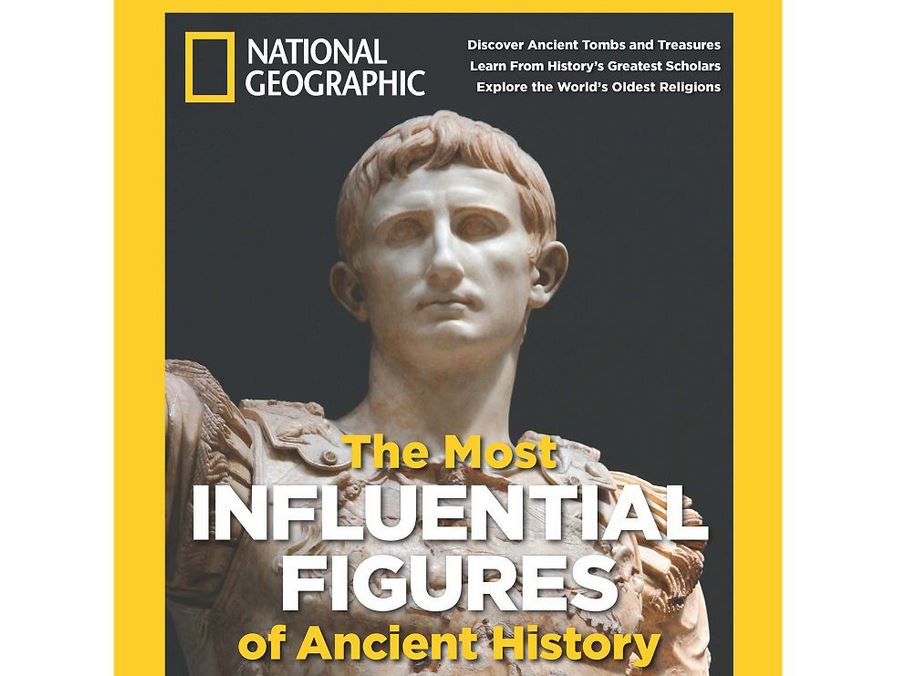In a dumbed-down culture we are often happy to take any scraps of intellectual comfort we can find. In such an impoverished climate, a magazine like National Geographic takes on almost iconic significance. We are tempted to see it as a last bastion of intellectual engagement, offering crumbs of comfort in the age of the soundbite. Unfortunately, this august journal doesn’t really deserve the status it is afforded. In truth, it is really only a sort of Readers’ Digest with intellectual pretensions.
Take the most recent issue, for instance. With customary grandiloquence it sports a photograph of a statue of Augustus Caesar on the cover, illustrating its emblazoned theme celebrating “The Most Influential figures of Ancient History.” Intrigued I flicked through the pages wondering whom the eminenti and cognoscenti in National Geographic’s ivory tower would condescend to place in their pantheon of Greats!
Divided into four chapters spanning from the kingdom of Mesopotamia to the reign of the Emperor Constantine, the issue gives preeminence to secular rulers who spread their “influence” through brute force and manipulation, i.e. military conquest and Machiavellian realpolitik. History is seen, therefore, as being nothing but the use and abuse of political power with “the most influential figures of ancient history” reading like a litany of Nietzschean Supermen, whose hubris lords it over a powerless and anonymous humanity: History as a triumphal succession of Ubermenschen exerting their will to power over nameless because meaningless Untermenschen. As for the names of the Supermen, the full list would prove tedious to repeat but it includes Cyrus the Great, Darius I, Tutankhamun, Ramses II, Pericles, Alexander the Great, Hannibal, Julius Caesar, Augustus Caesar, Trajan and Constantine. The only philosophers to make the list are Confucius and Socrates. Plato and Aristotle are passed over as footnotes. The influence of western philosophy is therefore ignored or dismissed, even though this was the very prism through which Europe saw itself for centuries upon centuries. Long after the influence of long dead rulers had faded into dust and ashes, the ideas of Plato and Aristotle were shaping the way that a whole civilization saw itself and the cosmos. Can anyone really claim that the influence of King Sargon of Akkad or Hammurabi, king of Babylon, has been as great as that of the great Greek philosophers?
Great writers, such as Homer, Sophocles and Virgil, whose influence forged the very imagination of a whole civilization and who are still read today in any reputable literature program, are passed over without so much as a mention. Literature, therefore, like philosophy, has less influence from National Geographic’s philistine perspective, than forgotten rulers of kingdoms who turned to dust as they did.
Others who failed to make the list include Moses and any of the Hebrew prophets, without whom none of the monotheistic religions (Judaism, Christianity and Islam) would have been possible. Regardless of how one might feel about religion, its influence is far greater than that of Queen Hatshepsut who makes the list of Supermen as an honorary Superwoman. Can we really take seriously a list that excludes Moses but includes Thutmose III?
Oh, and Jesus also fails to make the list. He’s mentioned as a passing footnote, warranting fewer words than Prince Khaemwaset and Sima Qian.
In the light of this travesty of history, National Geographic should stand accused of Fascist Revisionism for its rewriting of history in favor of its Strong Men, those tyrants who imposed their will to power on their own times, only to be buried indecorously by the sands of time and the oblivion it portends. One can at least feel consoled that this revisionist nonsense might one day be buried with them.
















Leave a Comment
Your email address will not be published. Required fields are marked with *